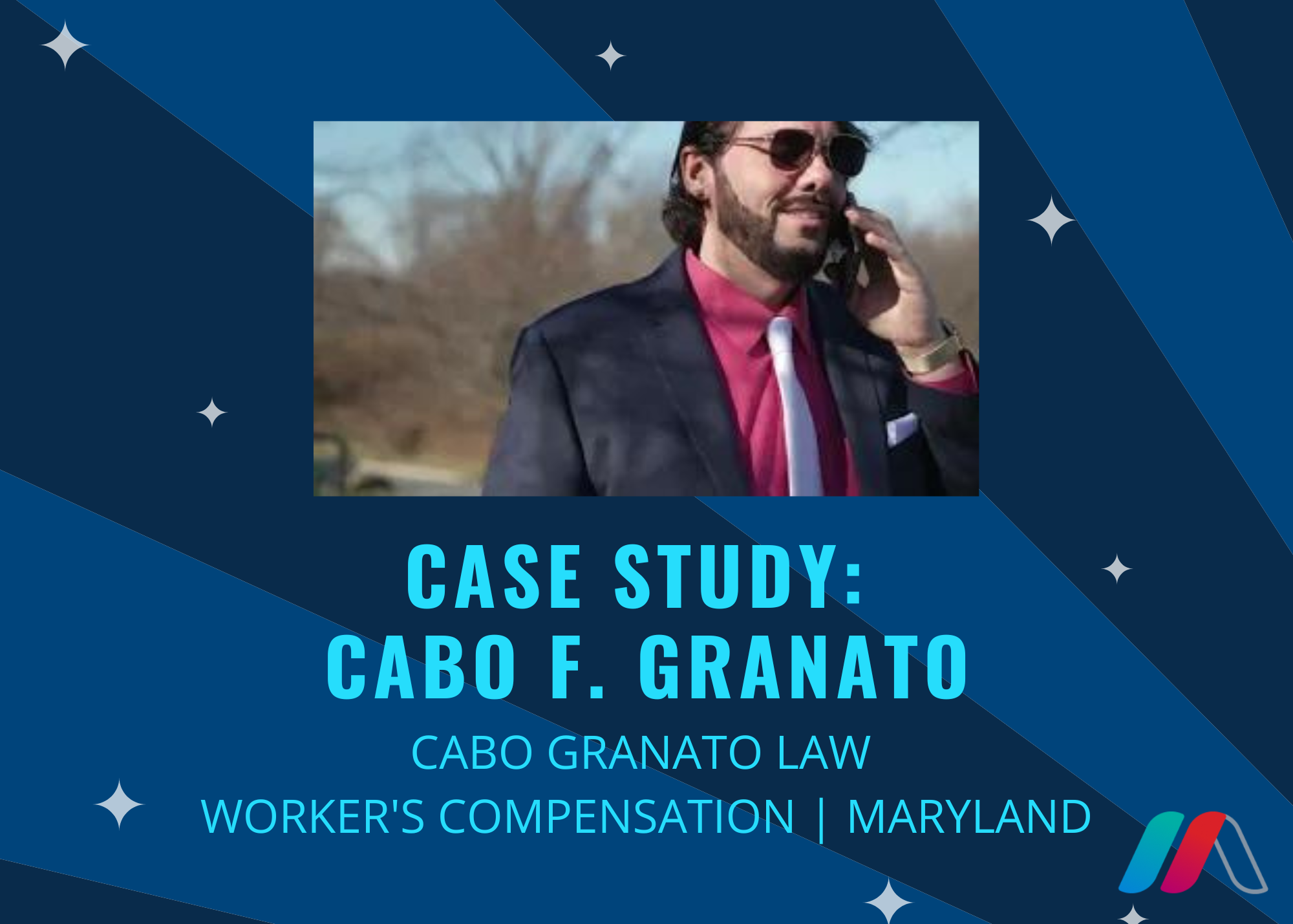How Do I Build a Mass Tort Legal Practice?


This is the first article of a three-article series related to working in the legal field of mass torts. In our second article, we address the pitfalls of working in mass torts and in our final article we provide best practices for attorneys interested in mass tort marketing.
Mass torts claims can prove to be very financially rewarding for your practice. Before diving in, however, it’s important that you understand what mass tort litigation entails and how you can position yourself to be successful in it.
If you’re interested in building a mass tort practice, these steps can help you get started.
What Are Mass Torts?
Mass torts are a form of legal action, in which multiple plaintiffs can file against one or more parties at fault. The claims are usually made due to similar physical or financial damages faced by the filers of the claim and can be filed at either a state or federal level.
Mass torts are similar to class action lawsuits, the key difference being that all filers are not treated as a single entity. In a mass tort action, each claim is treated as a separate lawsuit, and compensation is offered according to the damages each party has incurred. Mass torts can also involve multidistrict litigation, in which similar cases filed in different district courts can be transferred to a single court.
A mass tort practice can be lucrative for those looking to shift to civil litigation, since you can represent many people in one action. Although mass tort cases can be drawn out and require patience, the return on investment for these cases tends to be very high. The most common type of mass tort occurs due to defective products like medication, medical devices, or environmental hazards like oil spills.
How To Get Started With Mass Tort Practice
When opening a mass tort practice or shifting an existing practice into focusing on mass torts, you’ll want to focus on a few key elements.
Education and Advertising
One of the primary services attorneys provide in mass tort cases is to help consumers identify how a product or action may have damaged them.
In most mass tort cases, less than 20% of people who have claims end up filing against the defendant. Many people who have a case against a company are unaware that they could have a potential claim. Through tactful and tactical advertising to potential claimants, you can inform people who have suffered because of certain products or services and successfully gather plaintiffs.
Communication
Many clients fear having to pay hefty legal fees without any results to show for it. For that reason, it’s imperative to communicate to clients that lawyers do not get paid until compensation from a mass tort case is acquired. Clearly communicating this to potential plaintiffs can help you onboard more clients for a civil action.
Out-of-court settlements
Remember that successful mass tort practices don’t necessarily rely on winning cases in court. Mass tort cases can sometimes be settled out of court, since defendants in most cases do not want the bad press that comes from their involvement in lawsuits, especially if there is substantial proof of malpractice and negligence against them. Many defendants are ready to settle to avoid court proceedings, so knowing when to push a case and when to negotiate a settlement is key.
5 Stages of a Mass Tort Case
While each case is unique, there are basic similarities in all mass tort cases. There are multiple stages attorneys will need to go through to build a successful case, so be prepared to work through this process.
1. Leads
With mass torts, many leads have to be scrutinized. Through questioning, you can identify which of these leads have a case and warrant further investigation.
2. Identification of claims
Once you’ve confirmed that these leads have the potential to become clients, the next step is to identify whether the claimants have a case that could qualify for resolution. By digging into each client’s claims, you can identify which have the strongest legal standing.
3. Acquisition of clients
Client intake is the next step of the process. While many firms choose to do the intake process themselves, many companies provide intake services for smaller firms or solo practitioners. Legal intake services help firms and lawyers to classify and acquire the right clients. This is especially helpful to lawyers who have not previously dealt with mass tort law.
4. Send a compelling message
Mass tort law does not require you to build a brand name in the same way other legal practices do. Unlike auto accident cases where clients end up contacting the lawyer, mass tort requires an approach that emphasizes the message rather than who you are as a lawyer. A compelling message will cast a wide net, and potential claimants will contact you in order to inquire whether they qualify.
5. Quick action
Once claimants are reached, swift action is required, as they may move on to other firms once they realize they have a case. Therefore, law firms need to be quick in getting clients to sign a retainer and preparing them for the case ahead.
Important Things To Keep In Mind With a Mass Tort Practice
While there is a need to be quick and efficient early on, patience is the name of the game when it comes to the resolution of mass tort cases. Before jumping in, focus on these key considerations for carrying out a successful mass tort.
Co-Counseling
Co-counseling is a common phenomenon in mass torts. Mass tort actions usually require a collaborative effort, as one firm may handle the marketing and intake, while another would be part of the litigation, and another would handle the resolution. Firms may also be passive investors outsourcing the intake and litigation to other firms while remaining on retainer.
Getting involved with firms that are more experienced can be a great way to start building a mass tort practice. Working with credible intake agencies or other law firms is essential for effectively managing the work involved, and for ensuring your clients get what they need.
Client Satisfaction
Good communication is key to a satisfied client. Staying in touch and keeping clients informed throughout the process can help improve case outcomes and prevent confusion. Clients, for example, will sometimes end up signing retainers without fully realizing the legal ramifications. They may then also sign with other firms, raising dual representation issues that could have been resolved with clearer communication.
Frequent communication also reinforces the the client’s confidence in the firm. Many firms and lawyers receive bad reviews, not because of their practices, but because of their communication or lack thereof.
Effective information gathering is equally essential to client satisfaction. Before beginning a case, do your due diligence by ensuring that the statute of limitations has not run out and there is sufficient documentation behind the claim. You should also have confirmation regarding the use of the product or service and the damages that it has caused. This can be in the form of medical records, diagnoses, or pharmacy records. This information is imperative to building your case and can be costly and time-consuming to procure.
It is important to acquire this information while it is fresh in the mindsof clients, as it might be challenging to obtain this information later on. Therefore, the quicker you act, the easier it will be to procure it. The initial bellwether trial can also help you establish what would be required to reach a resolution and be successful in front of a jury.
Timing
Timing is critical for lawyers in mass tort, as it has three phases: the emerging phase, litigation phase, and settlement phase.
- If you choose to enter the emerging phase, it is relatively cheap. However, there is no guarantee of case viability. The case is still not consolidated in this phase as the courts have yet to pass the motions.
- The litigation phase is further along the road. At this point, the case has been consolidated and multidistrict litigation has begun, along with the bellwether trials. It tends to be more expensive to enter at this stage, and there is increased competition for potential clients.
- Finally, the settlement phase is the safest in terms of risk, as you only have to find qualified plaintiffs. However, the costs to acquire plaintiffs are the highest relative to the other phases.
It is also essential to consider the damages the defendant has caused; if they are substantial, a settlement (and your payment from it) could be sizeable.
Still not sure whether to take the plunge?
How you want to approach mass torts is reliant on how much risk you are willing to take and how much you want to spend. The financial viability of defendants should also be considered as it impacts the potential settlement at the resolution of the case. A cost-benefit analysis of the costs of acquiring and the potential settlements can help recognize which cases to pursue.
To get a sense of whether you are comfortable proceeding, research prominent, current mass tort cases yourself. Review the litigation pattern of these cases, the points of interest, and potential problems. Gathering and reviewing statistics of the potential pool of victims can also help establish the credibility of your claimants.
If you decide you want to move forward, keep an eye out for future posts from Martindale-Avvo to learn how you can benefit from this lucrative legal process.
Editor’s Note: Some of the material for this blog post was drawn from Martindale-Avvo’s March 10, 2021 webinar, “A Mass Tort: What Is It and How You Get into It.









